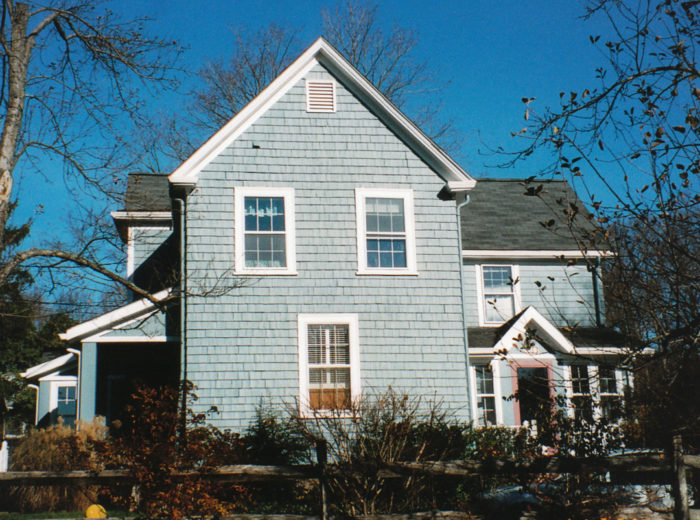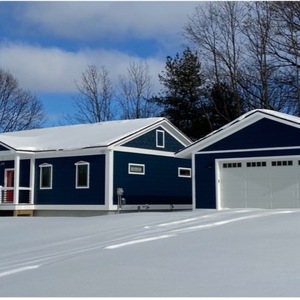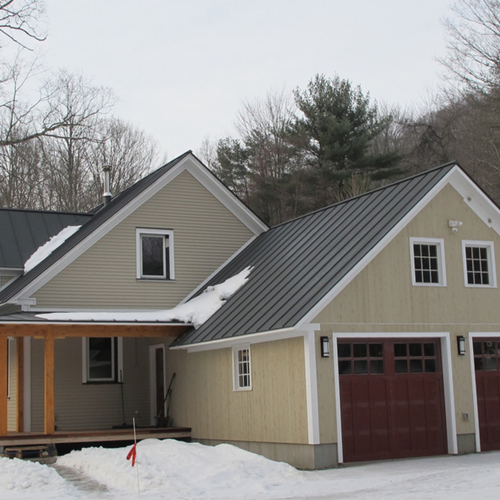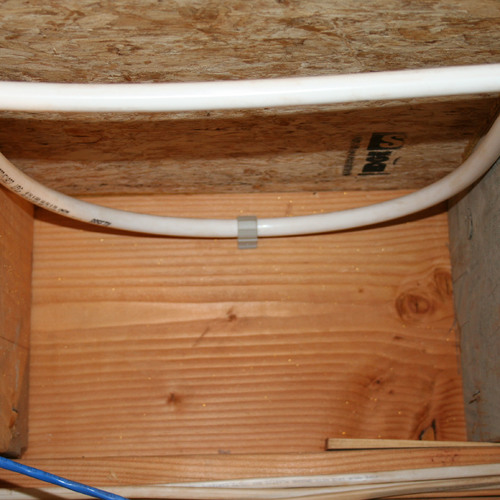Image Credit: Rachel White
Image Credit: Rachel White The 600-square-foot addition contains a bathroom, mudroom with laundry, an office/guest bedroom, and a kitchen.
Image Credit: Rachel White The addition takes an older home with convoluted geometry and makes it more complicated than ever.
Image Credit: Rachel White The former kitchen (left) became a family room (right).
I once gave a talk at a Build Boston conference with Jonathan Kantar of Sage Builders, on the topic “Green That Means Something.” Yes — the implied subtext is that there’s a whole lot of “green” out there that doesn’t mean all that much. But if you visit GBA regularly, you probably already knew that.
Anyway, one of the problems that we addressed is missed opportunities in green building. Homeowners typically get only a small handful of chances to dramatically improve the performance of their homes — say, when we put on a new roof or upgrade mechanicals or finish a basement. But very few of us have the foresight to take full advantage of these opportunities, no matter how green-minded we may be. In fact, some of us, present company included, have been known to squander an opportunity and even make it harder to improve performance in the future.
Back in 2003 — before I had drunk the sustainability Kool-aid — my husband and I were living in an 1,800-square-foot, three-bedroom, 2 1/2-bath home (photo, above right).
Originally built in 1895, the home had been added onto in the 1980s (the addition is visible on the right hand side of the photo) and the basement had been partially finished. We had lived in the home a couple of years, had our first child, were beginning to feel that we needed “more space” to accommodate our changing needs. Where would the grandparents stay when they came to visit? Where would we put all the toys? Where would we eat every day, since the dining room was “too nice” for young kids?
Without giving it much thought, we decided to add on; it never occurred to us that we could do otherwise (Images #2 and #3, below). We added on a bathroom, mudroom (with laundry), an office/guest bedroom, and a kitchen, bringing our total square footage up to 2,400.
We turned our old kitchen into a family room and opened it up to the kitchen to create a combined cooking, eating, playing and casual gathering space. (The plan is shown below as Image #4.)
Complicated geometry carries an energy penalty
As much as we have enjoyed our new space, the addition was not a good move from a sustainability perspective. This is largely because of the energy penalty of those additional 600 square feet — space that needs to be heated, cooled, and electrified for the rest of the home’s lifespan.
Could we have mitigated the damage somewhat by upgrading our insulation at the same time? Perhaps. But the effectiveness of any “damage control” would have been undermined by the design, which took a home with some complicated geometry and made it much more so. A bump-out here, dormers there, varied roof lines — all these architecturally interesting forms make it harder and more expensive to air seal and insulate properly.
Finally, we missed an opportunity to fix our basement space, which we were already using as living space but wasn’t insulated, sealed, and ventilated properly. If we had not done an addition, we could have conditioned our basement properly and used this space to meet our changing needs. (If done right, a finished basement can be comfortable, beautiful and have excellent indoor air quality).
But we didn’t do this. We did the addition, increased our energy footprint, and made it much harder to reduce this footprint in the future. No matter how “green” the choices are that we’ve made since then — from installing a high-efficiency boiler to changing out light bulbs to using fans for summertime cooling as much as possible — they won’t be able to make up for this missed opportunity.
Which isn’t to say that we haven’t tried or won’t keep trying. In fact, we have made good progress towards reducing our energy use since 2004. But we were starting much further back than we would have been if we’d made different choices back in 2003.
Learning from our mistakes
One good thing that has come out of this experience is my commitment to help others avoid the mistakes I made. At my Build Boston talk, I used my own home as an example — both of “green that means something” and green that, well, doesn’t mean a whole lot; and I used my own remodeling experiences (including but not limited to the infamous addition) as a template for how to and how not to advance along the path to a sustainable future.
I’ve learned a lot from my mistakes. They’ve become the basis for the standards, goals and tools I’m developing to help others — homeowners, architects and contractors alike — make sure that their projects truly are part of the solution to our environmental challenges.
Rachel White is performance manager at Byggmeister, a high performance remodeling firm based in Newton, Massachusetts, on a mission (impossible?) to quantify the impact of its work.
Weekly Newsletter
Get building science and energy efficiency advice, plus special offers, in your inbox.















0 Comments
Log in or create an account to post a comment.
Sign up Log in